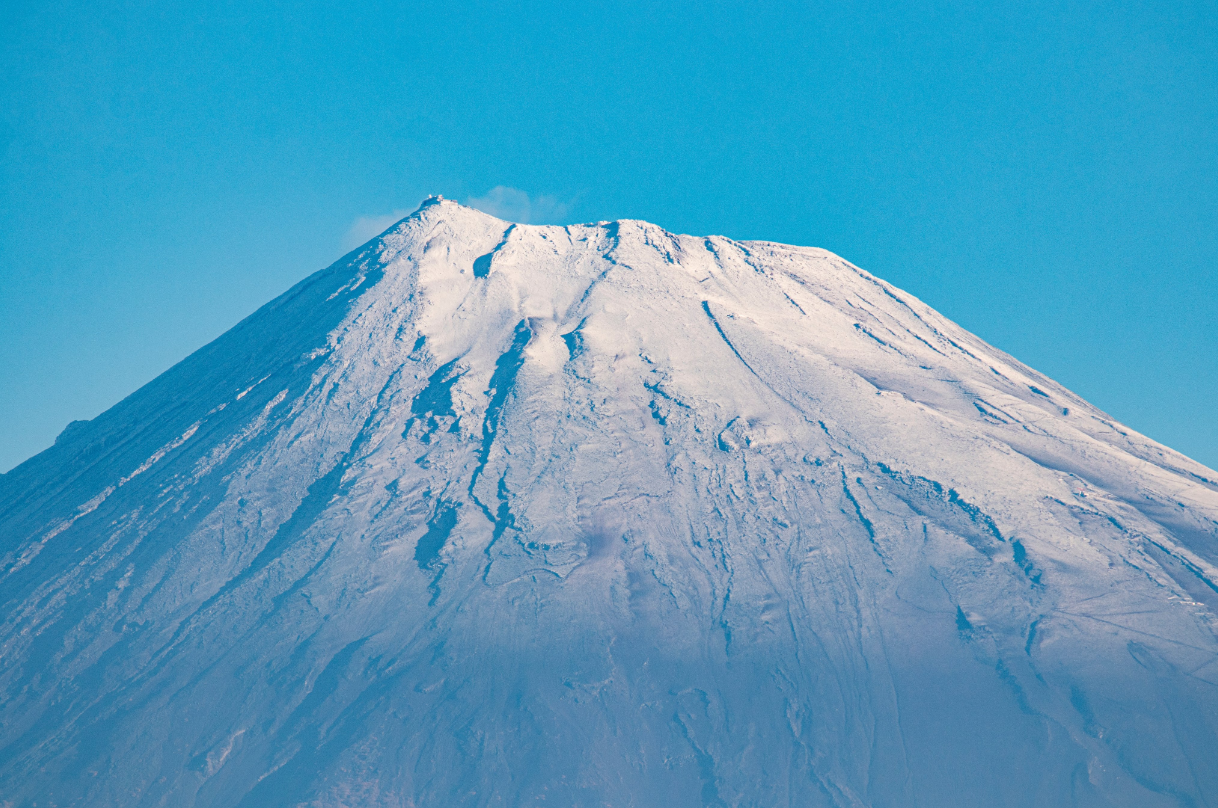Mount Fuji’s iconic snowcap belatedly made an appearance this week following the longest snow-free stretch in recorded history.
Photos shared by local authorities and residents on Wednesday showed a light dusting on Japan’s tallest peak, ending a delay that extended well past the previous record of 26 October in 2016.
This was the first time in 130 years that Fuji remained snowless in early November.
The 3,776m-peak usually gets a sprinkling of snow in early October, about a month after the summertime hiking season ends. Last year, according to the Japan Meteorological Agency, or JMA, snow fell on 5 October.
The JMA is yet to officially declare the new record due to heavy clouds obscuring visibility of the peak from its monitoring station. But residents in areas with clear skies around the active volcano captured and posted pictures showing snow capping the summit.

“These are photos of Mount Fuji, seen from the city hall this morning,” the X account of Fuji city in Shizuoka Prefecture said. “We could see a thin layer of snow cover near the summit.”
Similar images were posted by a nearby nursing home. “Finally, the first snow cover! Mount Fuji looks good with snow,” it posted.
Gorgeous time-lapse of Mt Fuji in Japan today and FINALLY, it's capped with snow 😍pic.twitter.com/dvBkbKvBbO
— Volcaholic 🌋 (@volcaholic1) November 5, 2024
An official from the Kofu office of the JMA said “the temperature is low today” which could allow the snow to linger, AFP reported.
The official, however, noted that October temperatures on Fuji were warmer than average, attributing it in part to global warming.
The autumn delay in the arrival of snow followed Japan’s joint hottest summer on record.
The Kofu office, which keeps weather data in central Japan and was the agency that announced the first recorded snowfall on Fuji in 1894, cited October’s surprisingly summery weather as the reason for the delay.

The average October temperature at the summit is minus 2C, but this year it was 1.6C, the highest since 1932.
Fuji, a symbol of Japan, used to be a place of pilgrimage. The mountain with its snowy summit and near symmetrical slopes have been the subject of numerous forms of art, including Japanese ukiyoe artist Katsushika Hokusai’s Thirty Six Views of Mount Fuji.
Today, it attracts hikers who climb to the summit to see the sunrise. Earlier this year Japan hiked the entry fees and restricted the number of visitors to tackle overcrowding.
The iconic mountain has attracted record numbers of tourists in recent years, leading to complaints about overcrowding, pollution and unruly behaviour.
The number of climbers recovered to the pre-pandemic level last year, with about 300,000 going up, Japan’s environment ministry said.
Additional reporting by agencies







